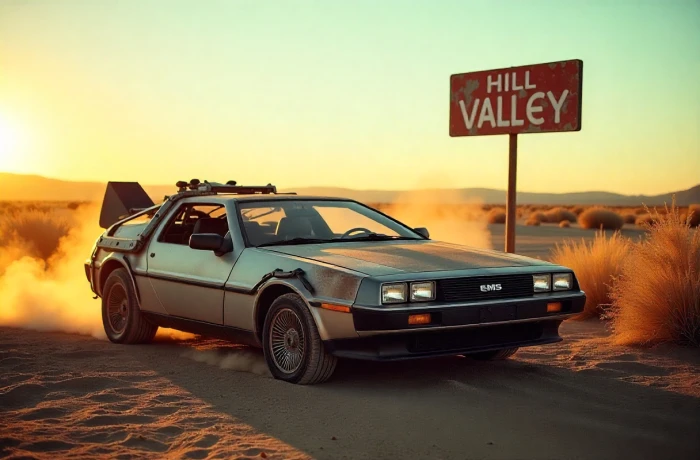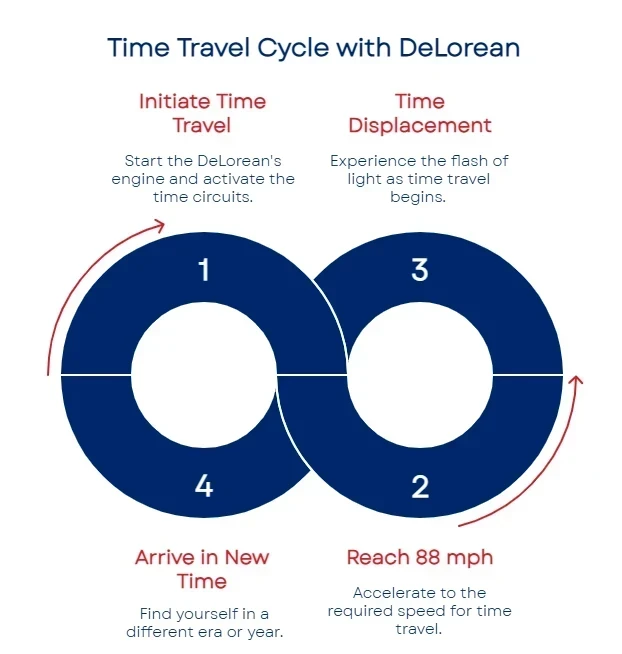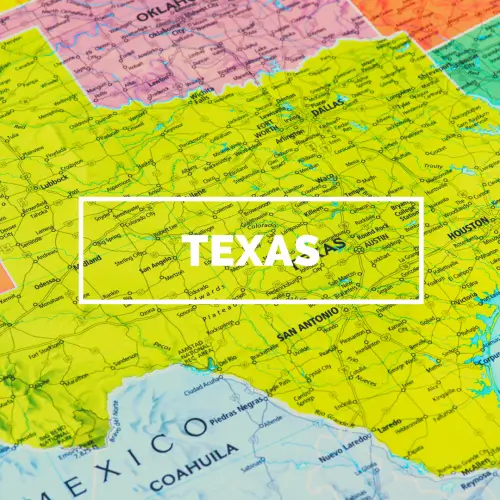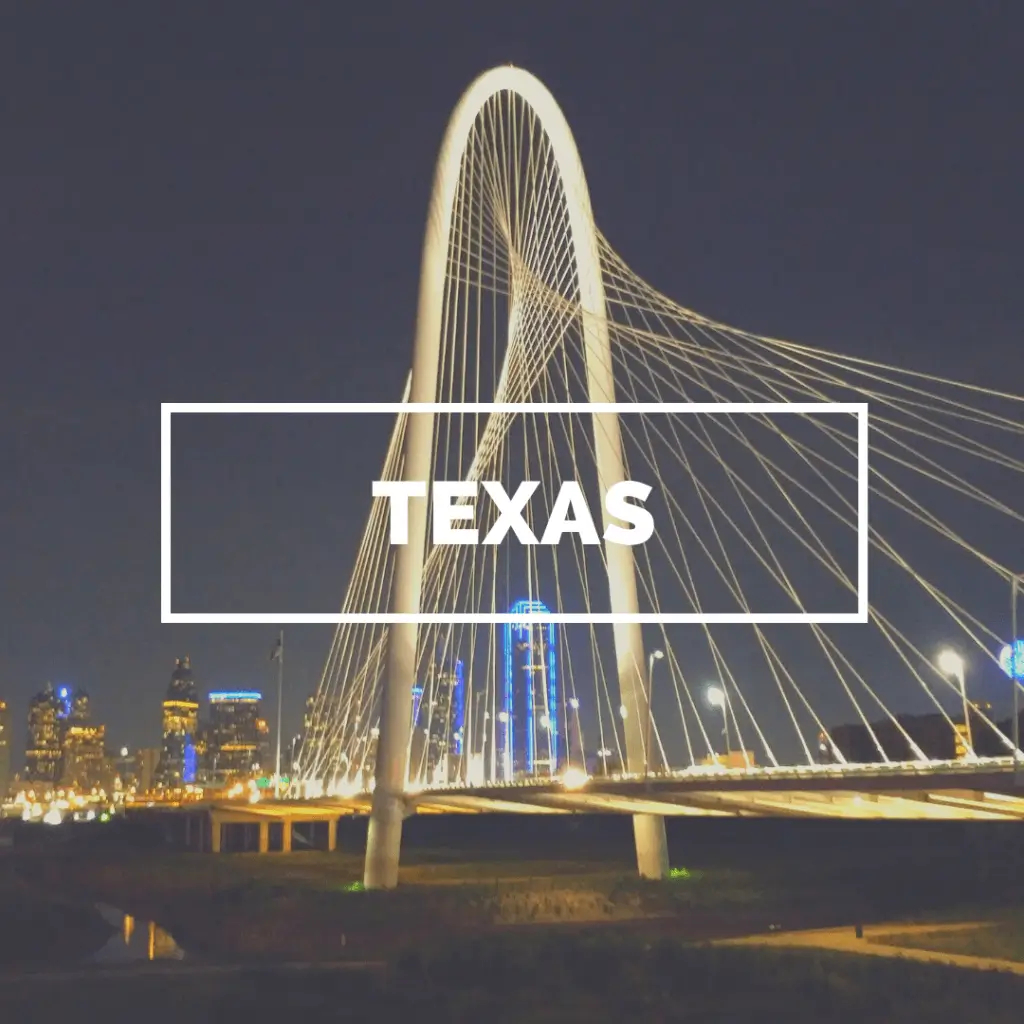Why the DeLorean From Back to the Future Still Sparks Our Imagination
For many fans, that moment in Back to the Future wasn’t just movie magic; it was a spark. A stainless steel car. A flux capacitor. A countdown to 88 mph. Suddenly, time travel didn’t just exist in books; it had a physical presence, doors that opened to the sky, and a trail of fire that lit the way.
Some kids dreamed of Ferraris. Others wanted muscle cars. But a whole generation looked at that gull-winged marvel and said, That’s the one. The car, piloted by Marty McFly, became an instant legend.
More than just a car, the DeLorean DMC-12 soared to cinematic icon status after its debut in the 1985 blockbuster Back to the Future. It became the silver screen's most recognizable time machine, a valid symbol of innovation.
What You’ll Learn
Here’s a quick look at what’s ahead:
Why the DeLorean was chosen as the perfect time-travel machine, and how it almost got replaced.
What made the real DMC-12 so unique was its gull-wing doors and stainless steel bodywork.
How the movie version became a legend, sparking real-world replicas, fan communities, and lasting cultural impact.
A Quick Guide to the Back to the Future DeLorean’s Real and Reel Legacy
The DeLorean from Back to the Future became more than a movie car. It has become a pop culture legend that continues to appear in shows, museums, conventions, and collectors' garages. Although it had a short production run, its fame stemmed from a perfect blend of design, storytelling, and timing. Whether you're into cars, films, or both, there's something about this stainless steel time machine that still holds our attention.
Here’s a closer look at why the DeLorean still matters today:
The Film’s Car Choice and Why It Mattered
The DeLorean DMC-12 looked like something from another planet. With its stainless steel panels and gull-wing doors, it perfectly suits the time-travel story. The movie team even turned down a big offer from Ford to replace it with a Mustang.
What Made the Real DMC-12 Stand Out
The DeLorean wasn’t especially fast, but it was undeniably different. It featured a 2.85-liter V6 engine, an angular body designed by an Italian designer, and was produced in only about 9,000 units.
How the Car Was Modified for the Film
For the movie, the DeLorean got some serious upgrades: a flux capacitor, glowing time circuits, external coils, and even sound effects pulled from a Porsche. Each film used multiple versions of the car, each set up for different scenes.
How It Became a Cultural Icon
The movie topped the box office in 1985, and the DeLorean became one of the most recognizable cars in film history. Fans still gather at cons and car shows to see original and replica builds. The car was even added to the Library of Congress’s Historic Vehicle Register.
The Legacy That Still Drives Today
Replica builders, such as Stephen Wynne’s company, still restore or rebuild DMC-12s, with some models fetching over $100,000. It’s one of the most recreated film cars ever, and its fanbase spans across countries and generations.
A Wild Choice: Why the DeLorean Was Cast as a Time Machine
In the early 1980s, when Back to the Future was being developed, Ford offered the production team $1 million to feature a Mustang instead.
The reply from screenwriter Bob Gale? “Doc Brown doesn’t drive a [bleep] Mustang.”
Instead, the team opted for the DeLorean DMC-12, a car featuring stainless-steel panels, a wedge-like silhouette, and gull-wing doors. It didn’t look like anything else on the road. It looked like the future.
That’s precisely what the story needed. In 1950s scenes, the car was mistaken for a UFO. It didn’t require special effects to sell the idea of time travel; it already looked like it had arrived from another era.
Real vs. Movie DeLorean: Side-by-Side Comparison
Under the Steel: What Made the Real DMC-12 So Unique
The DeLorean DMC-12 wasn’t built for fame. It was meant to be a sports car that stood out in the early 1980s. And it did, for a while.
The car was created by John DeLorean, a former GM executive who wanted to build something bold. Production started in 1981 in a factory in Northern Ireland. But the company didn’t last long. By 1983, it was out of business. In total, only about 9,000 DeLoreans were made.
Design Features That Set It Apart
Gull-wing doors that opened upward like a bird’s wings.
Brushed stainless steel panels, devoid of paint, lend it a raw, futuristic appearance.
Fiberglass underbody mounted on a steel frame.
Giorgetto Giugiaro, a world-famous car designer, designed the angular body.
Performance Specs
2.85-liter V6 engine with 130 to 150 horsepower
Zero to 60 mph in about 10.5 seconds
Top speed of around 117 to 130 mph
Five-speed manual transmission with an option for automatic
It wasn’t built for racing, and as a result, it didn’t sell well. But its design gave it staying power. It was bold. It was different.
Doc Brown’s Workshop: How the Movie Mods Made It Legendary
To create the illusion of time travel, the production team modified several DeLoreans for different purposes. Some were built to drive. Others were designed for close-ups or interior shots.
Key Modifications That Made the Car Movie-Ready
Flux capacitor: The Y-shaped device with glowing tubes that “makes time travel possible.”
Time circuits: Digital displays showing the destination, present, and departure times.
Plutonium chamber: Used in the first film before it was swapped out for the home-sized “Mr. Fusion” unit in the sequels.
Exposed wiring and coils: Added across the body, giving it that “mad scientist” flair.
Porsche engine sounds: Used in post-production to replace the DeLorean’s quiet V6 with something that sounded more intense.
Each car had to look like something Doc Brown could’ve built in his garage.
From Film Set to Fan Garage: Real-Life Replicas
The DeLorean time machine didn’t fade after the credits rolled. It inspired a global wave of builders and restorers who refused to let the story end.
DeLorean Motor Company (Texas)
Stephen Wynne’s company, based in Humble, Texas, acquired the rights and leftover inventory from the original DeLorean Motor Company. While they don’t build time machines per se, they restore original DMC-12s, and some of their clients convert them into replicas of time machines afterward. Some fan-modified versions now cost over $100,000.
Museum Pieces
Original screen-used cars live in places like Universal Studios and the Petersen Automotive Museum. They're still among the biggest draws.
DIY Time Machines
Across the globe, fans build their own DeLoreans—some painstakingly screen-accurate, others more creatively interpreted. Forums, Facebook groups, and Comic-Con panels keep the community alive.
Why the Back to the Future DeLorean Captivates Fans
The Back to the Future DeLorean is more than a car—it’s a cultural icon. Its gull-wing doors, stainless steel body, and role as a time machine car in the 1985 blockbuster made it unforgettable. Fans searching for “DeLorean DMC-12” often cite its futuristic design as a reason for its enduring appeal. Unlike typical sports cars, the classic DeLorean stood out with its unique look, sparking imaginations worldwide. Its fame drives demand for replicas and originals, with collectors checking “DeLorean car value” to gauge investment potential.
The History Behind the DeLorean DMC-12’s Design
The DeLorean DMC-12, built from 1981 to 1983, was John DeLorean’s vision of a bold, futuristic car. Designed by Giorgetto Giugiaro, its stainless steel body and gull-wing doors made it a standout. Though only 9,000 units were produced, its role as the Back to the Future DeLorean cemented its legacy. With a 2.85-liter V6 engine, it wasn’t a speed demon, but its style was unmatched. Enthusiasts searching “classic DeLorean for sale” value its rarity and design, which continue to influence modern concepts like the Alpha5.
How the Time Machine Car Was Crafted for the Movies
Creating the time machine car for Back to the Future required clever modifications. The DeLorean DMC-12 was fitted with a glowing flux capacitor, time circuit displays, and external coils to sell the time-travel fantasy. Seven cars were used across the trilogy, each tailored for specific scenes like driving or close-ups. Porsche 911 engine sounds replaced the V6’s hum for drama. Fans researching “Back to the Future DeLorean” love these details, which make replicas highly sought after, boosting DeLorean car value in collector markets.
Finding a Classic DeLorean for Sale Today
Locating a classic DeLorean for sale requires effort but is rewarding. Platforms like Hemmings, Bring a Trailer, or the DeLorean Motor Company (Texas) list restored DeLorean DMC-12 models, with prices starting at $60,000 and climbing to $100,000 for pristine or movie-accurate replicas. Check for original stainless steel panels and maintenance records to ensure DeLorean car value. Local car shows and fan groups, often found via “Back to the Future DeLorean” searches, can also connect buyers with sellers of this iconic time machine car.
Restoring and Maintaining a DeLorean DMC-12
Restoring a DeLorean DMC-12 is a labor of love for fans of the Back to the Future DeLorean. Focus on preserving the stainless steel body, which resists rust but shows scratches. Sourcing parts like gull-wing door hydraulics or V6 engine components can be challenging, but suppliers like DMC Texas help. Budget $15,000–$30,000 for a full restoration to maintain DeLorean car value. Online communities, found through “classic DeLorean for sale” searches, offer tips on upkeep, ensuring your time machine car shines at shows.
The Alpha5: A New Era of DeLorean
While the DeLorean DMC-12 became legendary through Back to the Future, the story didn’t end in the 1980s. In 2022, the DeLorean Motor Company (Texas) unveiled the Alpha5, a bold reimagining of what a DeLorean could be; not a replica, but a revival.
The Alpha5 isn’t built to be a time machine, but it carries the DNA of the original in striking, modern form with futuristic lines, advanced engineering, and a powerful all-electric drivetrain. It’s designed to push the brand forward while honoring what made the DMC-12 iconic.
The Legacy That Won’t Sit Still
Since its explosive debut in 1985, the DeLorean time machine hasn’t merely survived in pop culture—it has accelerated through it, a testament to its enduring design and the imaginative narrative it embodies. Unlike a vast majority of movie props that often fade into obscurity once the credits roll, this iconic vehicle has only gained momentum, cementing its place as a cultural touchstone.
More than just a featured prop in the beloved Back to the Future trilogy, it became the undisputed heart of the saga.
Need Help Shipping Your Car?
Transporting a classic car, a custom build, or even a replica can be a complex process. Whether you’ve just acquired a DeLorean, are sending one off for restoration, or moving it to a new display location, choosing the right shipping partner is crucial.
AmeriFreight Auto Transport, a top-rated auto transport company, specializes in coordinating vehicle shipments with vetted carriers nationwide, experienced in handling unique and high-value vehicles with care. With options like enclosed auto transport, your prized possession is protected from the elements and road debris, helping it arrive in pristine condition.
Frequently Asked Questions (FAQs)
Was the DeLorean a real production car?
Yes. The DeLorean DMC-12 was manufactured from 1981 to 1983 in Northern Ireland, with approximately 9,000 units produced.
How many DeLorean cars were used in the movies?
Seven different cars were used across the three films. Each one had a different role, depending on the scene.
Did the DeLorean in the movie reach 88 miles per hour?
The real car could get close, but not always quickly. The speed was part of the story and added drama to the time travel scenes.
Was the DeLorean ever a successful car?
Not commercially. The original company folded quickly. But thanks to the movie, the car outlived its short market run and became a lasting symbol.
Is the DeLorean still around today?
Yes. Some original cars are in museums or private collections. Others appear at car shows, fan events, and film exhibits.
Can I still buy a DeLorean today?
Yes! You can find restored originals through the DeLorean Motor Company or buy replicas from custom builders. Prices vary, often starting around $60,000 and extending into the six-figure range.
Disclaimer: This article is for informational and entertainment purposes only. The DeLorean is a fictional vehicle from a film series, and while some replicas exist, they are not affiliated with the original creators or licensed properties. Any references to custom builds or fan-made projects are based on publicly available information and are not endorsements. Always consult a qualified professional before attempting any automotive modifications or large-scale vehicle builds.















